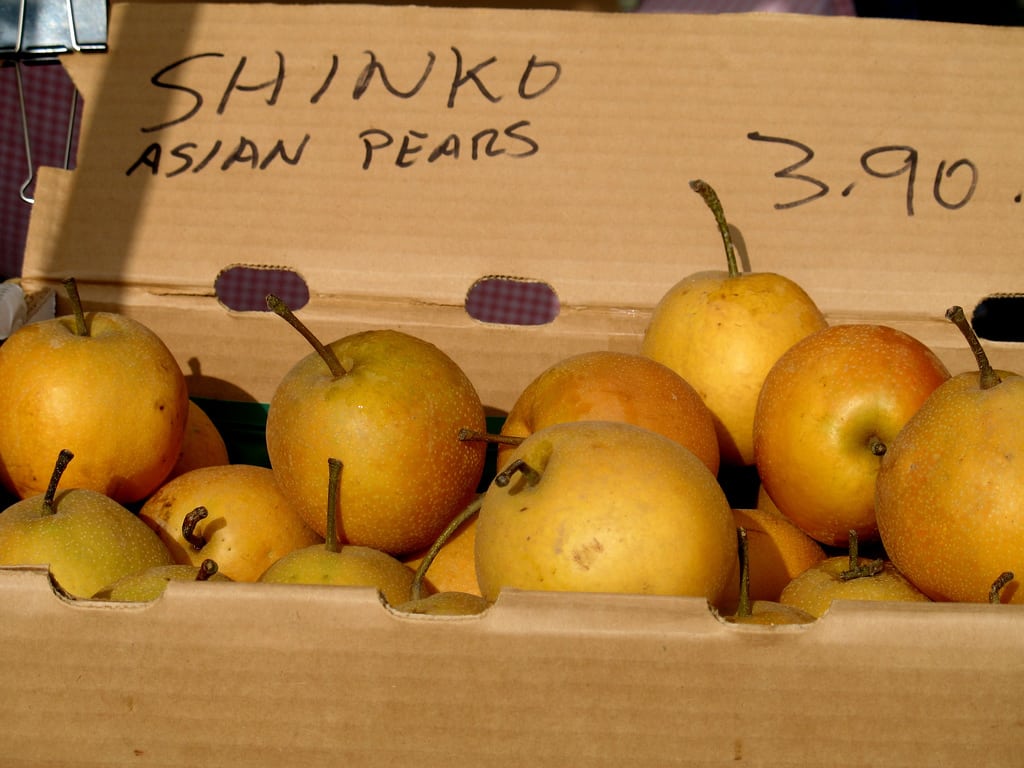Shinko Asian Pear Info: Learn About Shinko Pear Tree Growing And Uses


Asian pears, native to China and Japan, taste like regular pears, but their crispy, apple-like texture differs substantially from Anjou, Bosc, and other more familiar pears. Shinko Asian pears are large, juicy fruits with a rounded shape and attractive, golden-bronze skin. Shinko pear tree growing isn’t difficult for gardeners in USDA plant hardiness zones 5 through 9. Read on for more Shinko Asian pear information and learn how to grow Shinko pears.
Shinko Asian Pear Info
With shiny green leaves and masses of white blooms, Shinko Asian pear trees are a valuable addition to the landscape. Shinko Asian pear trees tend to be resistant to fire blight, which makes them a good choice for home gardeners. Height of Shinko Asian pears trees at maturity ranges from 12 to19 feet (3.5 -6 m.), with a spread of 6 to 8 feet (2-3 m.). Shinko pears are ready for harvest from mid-July through September, depending on your climate. Unlike European pears, Asian pears can be ripened on the tree. Chilling requirements for Shinko Asian pears is estimated to be at least 450 hours below 45 F. (7 C.). Once harvested, Shinko Asian pears store well for two or three months.
How to Grow Shinko Pears
Shinko pear trees need well-drained soil, as the trees don’t tolerate wet feet. At least six to eight hours of sunlight per day promotes healthy blooming. Shinko pear trees are partially self-fruitful, which means it’s a good idea to plant at least two varieties nearby to ensure successful cross-pollination. Good candidates include:
- Hosui
- Korean Giant
- Chojuro
- Kikusui
- Shinseiki
Shinko Pear Tree Care
With Shinko pear tree growing comes adequate care. Water Shinko pear trees deeply at planting time, even if it’s raining. Water the tree regularly – whenever the soil surface dries out slightly – for the first few years. It’s safe to cut back on watering once the tree is well established. Feed Shinko Asian pears every spring using an all-purpose fertilizer or a product formulated specifically for fruit trees. Prune Shinko pear trees before new growth appears in late winter or early spring. Thin the canopy to improve air circulation. Remove dead and damaged growth, or branches that rub or cross other branches. Remove wayward growth and “water sprouts” throughout the growing season. Thin young fruit when the pears are no larger than a dime, as Shinko Asian pears often produce more fruit than the branches can support. Thinning also produces larger, higher quality fruit. Clean up dead leaves and other plant debris under the trees every spring. Sanitation helps eliminate pests and disease that may have overwintered.
Gardening tips, videos, info and more delivered right to your inbox!
Sign up for the Gardening Know How newsletter today and receive a free copy of our e-book "How to Grow Delicious Tomatoes".

A Credentialed Garden Writer, Mary H. Dyer was with Gardening Know How in the very beginning, publishing articles as early as 2007.
-
 Zinnias On Repeat: 10 Glorious Cut-And-Come-Again Varieties For Endless Summer Bouquets
Zinnias On Repeat: 10 Glorious Cut-And-Come-Again Varieties For Endless Summer BouquetsThese zinnia varieties keep giving all summer, making them the perfect choice for dedicated cutting gardens – or just the occasional homegrown bouquet.
By Ellen Wells
-
 Create A Romantic Garden Straight Out Of Bridgerton: Regency Era Romance In Your Garden
Create A Romantic Garden Straight Out Of Bridgerton: Regency Era Romance In Your GardenTry some romantic garden ideas straight out of Bridgerton. Flowers and gardens in the Regency era were lush and charming and you can get the same look!
By Bonnie L. Grant